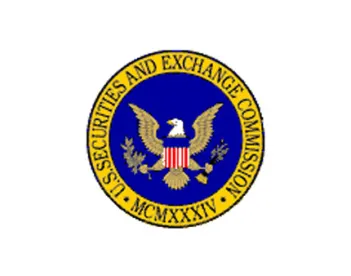In the second step of its five-part plan to enhance registered funds regulations, the SEC has proposed new requirements on portfolio liquidity, risk monitoring, and board oversight.
At an open meeting held on September 22, the US Securities and Exchange Commission (SEC) unanimously approved a proposal that is designed to strengthen the management of liquidity risk by certain registered open-end investment companies, including mutual funds and ETFs.[1] The SEC’s proposal creates new Rule 22e-4 under the Investment Company Act of 1940 (1940 Act), which would require funds to establish a liquidity risk management program and determine a minimum percentage of net assets that must be convertible to cash within three days. The SEC’s proposal would also enhance liquidity disclosure requirements, codify SEC guidance that limits a fund’s illiquid investments to 15% of the fund’s net assets, and amend Rule 22c-1 under the 1940 Act to permit certain funds to use “swing pricing,” which would allow managers to adjust the price at which shareholders transact in fund shares during periods of heavy redemptions or purchases. The proposal seeks to enhance a fund’s ability to meet redemption requests while mitigating dilution of shareholders, particularly during periods of market disruption.
SEC Chair Mary Jo White noted that the proposed rule is the next step in the SEC’s five-part plan to enhance the regulation of risks that arise from portfolio composition and the operations of funds and investment advisers. This plan includes measures to (1) enhance data reporting (as proposed this past May),[2] (2) strengthen the management of fund liquidity, (3) better address risks from funds’ use of derivatives (a proposal is anticipated by the end of this year), (4) plan for the transition of client assets, and (5) “stress test” funds and advisers.
Chair White explained the necessity for improved liquidity risk management rules by emphasizing the rise of fund strategies that rely on securities that tend to be less liquid, such as high-yield bonds, emerging market securities, and alternatives. She stated that SEC staff economists have found that foreign bond funds and alternative strategy funds have historically experienced more unpredictable purchases and redemptions than average mutual funds.
The SEC’s package of proposals would require open-end funds—including mutual funds and ETFs, but not money market funds—to take the following actions:
Establish a Liquidity Risk Management Program. Under the program, a fund would classify the liquidity of each of its holdings based on the number of days that it would take to convert a position to cash without a market impact. Assets are assigned to one of six categories (or “buckets”) based on the amount of time they would take to be liquidated. Proposed rule 22e-4 provides a number of factors to be considered by fund boards as they assess and monitor the liquidity risk of fund assets, including, among others, whether the asset is listed on an exchange; the number, diversity and quality of market participants; trading frequency and volume; price volatility; bid-ask spreads; and position size. In classifying the liquidity of an asset, a fund also would be required to consider the asset’s relationship to another portfolio asset, such as when a fund “covers” a derivatives position by maintaining otherwise liquid assets in a segregated account. Under the proposal, the liquidity of such segregated assets would be classified by reference to the liquidity of the derivatives position they are covering because the segregated assets would not be available to meet redemptions until the derivatives position is unwound or the segregated assets are replaced with different assets. Each program would have to be tailored to a fund’s specific portfolio and risks, and fund boards would be required to annually review and approve the program. Third-party services that assist funds in making liquidity determinations, including some new services that are coming to market, could be used in meeting this requirement.
Cap Illiquid Assets at 15%. The proposed rule would formalize current SEC guidance that limits a fund’s ability to invest in illiquid assets to 15% of the fund’s net assets. This limitation also would be required to be monitored as part of the fund’s liquidity risk management program. Because the liquidity risk management program would require a fund to categorize its assets according to the amount of time it would take to liquidate them based on market, trading, and asset-specific factors, a fund would not need to consider the size of the fund’s position in an asset or the number of days needed to convert the asset to cash in determining whether the asset is subject to the 15% limit.
Determine Minimum Percentage of Net Assets Convertible to Cash in Three Days. As part of the liquidity risk management program, a fund would be required to determine a minimum percentage of its net assets that must be invested in cash and assets that are convertible to cash within three business days at a price that does not materially affect the value of the assets immediately prior to the sale. This three-day liquid asset minimum would be established by a fund based on its investment strategy, cash flow projections, use of borrowings and derivatives for investment purposes, and other factors. The minimum percentage must be approved by the fund’s board of directors and is subject to review by the board.
Enhance Disclosure and Reporting. The proposal would amend Form N-1A to require funds to disclose their liquidity risk management practices, including, if applicable, the use of swing pricing. Funds would also be required to file any agreements for bank lines of credit as exhibits to their registration statements. Funds would need to disclose the liquidity classification of fund assets and the three-day liquid asset minimum in Form N-PORT. Funds would also be required to disclose information regarding committed lines of credit, interfund lending and “swing pricing” in Form N-CEN. These reporting requirements build on the reporting regime set forth in the Investment Company Reporting Modernization Release proposed on May 21, 2015.
Use “Swing Pricing.” Proposed amendments to Rule 22c-1 under the 1940 Act would permit, but not require, open-end funds other than money market funds and ETFs to use swing pricing. Swing pricing would allow a fund to adjust the value at which investors purchase or redeem their shares when shareholder redemptions or purchases surpass certain thresholds that have been pre-approved by the fund’s board. Funds may elect to establish swing thresholds that would be triggered when levels of net purchases into or redemptions out of a fund exceed a specified percentage of the fund’s NAV. The amended rule would set forth factors to be considered by the board in determining swing thresholds and require that swing thresholds be reviewed annually. If a swing threshold is triggered, the fund would apply a swing factor to the fund’s NAV. This would allow funds to adjust downward the price at which investors cash out of a fund if they sell shares during periods of high redemptions (or adjust upward during periods of net purchases). Swing pricing attempts to ease the burden on existing shareholders by distributing to purchasing and redeeming shareholders the trading costs associated with high purchases and redemptions. Swing policies and procedure would be reviewed and approved annually by the board and the independent directors. ETFs are not included within the scope of the swing pricing proposal because the SEC believes that ETFs’ purchase and redemption practices do not generally entail the risk of dilution as a result of authorized participants’ purchase and redemption activity, and that swing pricing could impede the effective functioning of an ETF’s arbitrage mechanism.
Although the proposal received unanimous approval, Commissioners Gallagher and Piwowar expressed concerns regarding the imposition of a three-day asset minimum and the use of swing pricing. Both Commissioners advocated that a seven-day asset minimum would be more appropriate given its statutory basis in Section 22(e) of the 1940 Act and the fact that many funds are not required to deliver assets to redeeming shareholders in three days or less. With respect to swing pricing, Commissioner Gallagher suggested that funds should have the flexibility to approve different swing thresholds for large redemptions and large purchases or only apply swing thresholds to large redemptions. Commissioner Piwowar expressed his concern that swing pricing would cause investors to employ “gaming behavior” as investors try to predict how large redemptions will affect NAV. He also sought out comments on alternative methods for mitigating shareholder dilution from large redemptions and questioned if liquidity or redemption fees, like those proposed as part of the new money market fund reform rules, would offer a better solution. In addition, he asked that academic economists weigh in on how swing pricing affects the use of market investment tools like alpha, beta, sharp ratios and tracking error.
Commissioner Stein, on the other hand, asked commenters to consider whether the proposed rules go far enough and whether the rules should be tailored specifically to those funds that raise the greatest liquidity concerns. She asked if such funds would be better classified as closed-end funds or private funds.
If adopted as proposed, new Rule 22e-4 and the amendments to Rule 22c-1 would impose even more burden on funds’ compliance personnel, portfolio managers, and operations personnel. Similar to the money market fund enhancements that were adopted in 2014, the proposals would also add to the responsibility of the board of directors and require new assessments and determinations.
Once the proposed rule is published in the Federal Register, commenters will have ninety days to provide comments, which is thirty days more than the usual 60-day comment period.
[1] Open-End Fund Liquidity Risk Management Programs; Swing Pricing; Re-Opening of Comment Period for Investment Company Reporting Modernization Release, SEC Release No. 33-9922 (Sept. 22, 2015)
[2] See our May 2015 LawFlash“SEC Proposes Rules Affecting Funds and Advisers.”




 />i
/>i

